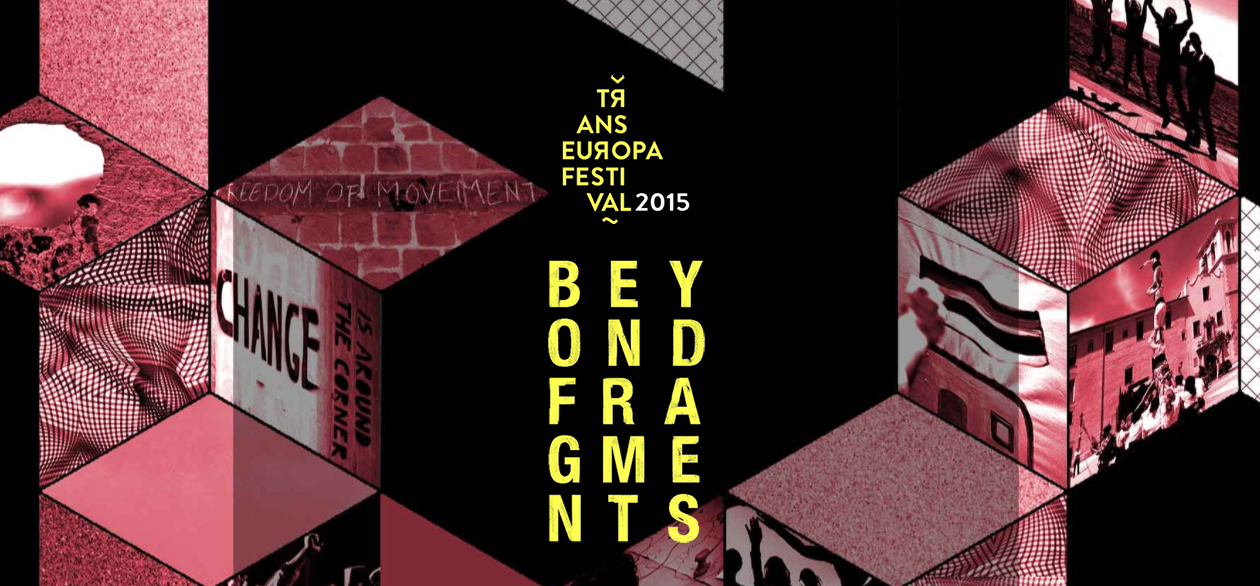
Workshop coordinated by Lorenzo Tripodi, Laura Colini, Manuela Conti in the context of Transeuropa Festival.
October 1/4 2015
With the participation of Beatriz Cantinho, Luigi Galimberti, Vanija Ristic, Ksenja Radovanovic, Lukas Stolz, Segolene Pruvot.
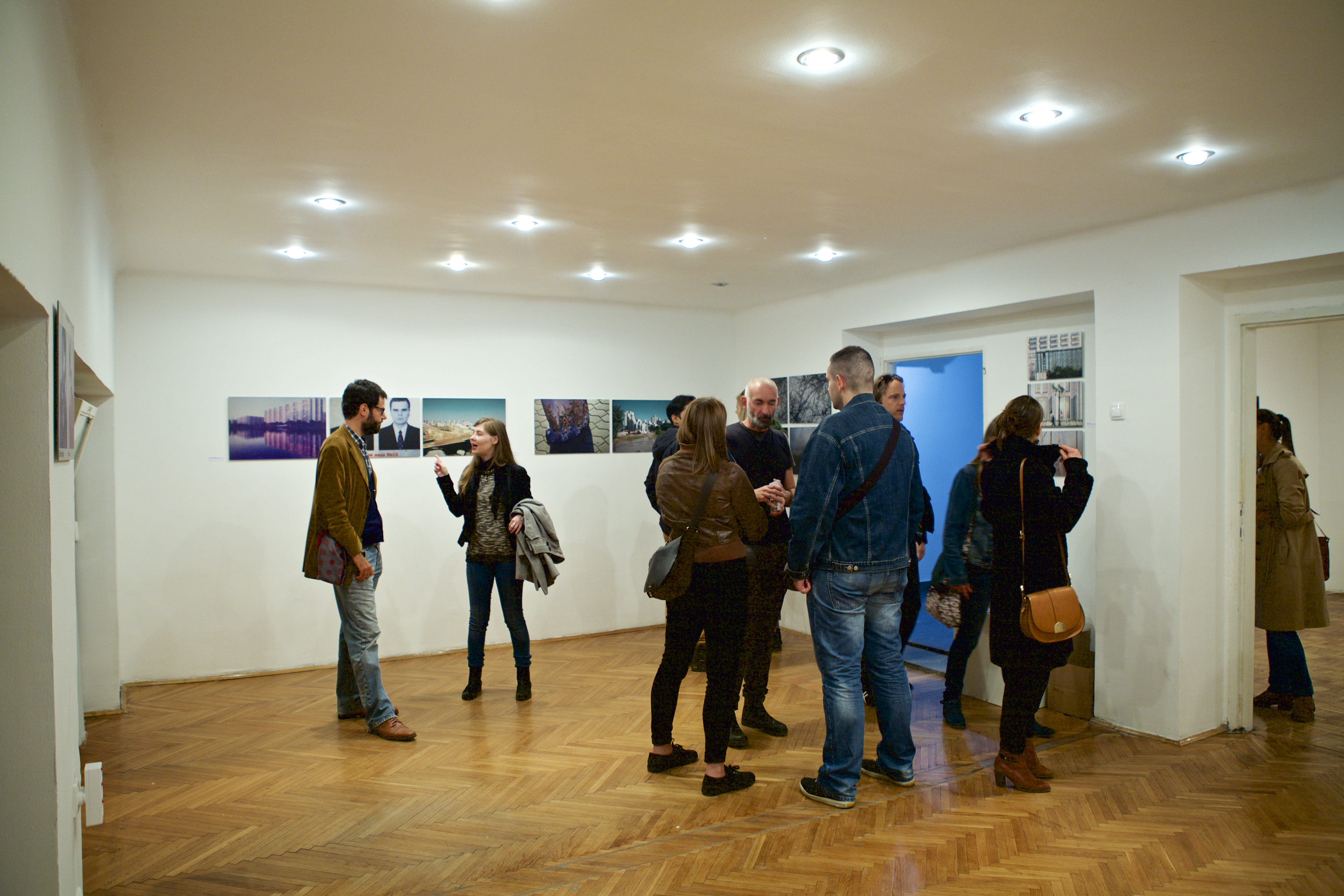
The workshop took place at the Remont Gallery Belgrade where the Marginal Notes exhibition by ogino:knauss was installed. Drawing on one of the main topics of the festival we proposed to assess the City of Commons. In the current policy and planning debate, the city is schizophrenically interpreted at once as a competitive machine of growth and a cooperative social resource. This contradiction has been be the starting point for a drift into the urban identity of Belgrade aimed at retracing its nature as a common good and questioning how such a communal nature struggles with agonistic forces of exploitation, privatisation and control.
Thursday October 1st
During the first session we discussed within a small but motivated group of participants how we could understand the City of Commons. We examined some of the city definitions displayed in the exercises website to find which were more consistent with the topic. We started from such ones as Liquid City – the water as archetypal example of commons –, Interrupted City – the morphology of the city designing a geography of accessibility and enclosure –, Inhabited City – the city as a community of people-, etc. Then we asked the participants to present themselves and to start to think about a preferred keyword / perspective to approach the theme. We proposed to each of them to select one or more among the 64 existing definitions particularly relevant to understand the city as a commons and successively look for a place or a story in Belgrade able to illustrate it. The final goal of the workshop was to design a public urban walk able to recapitulate the discussion in form of wandering.
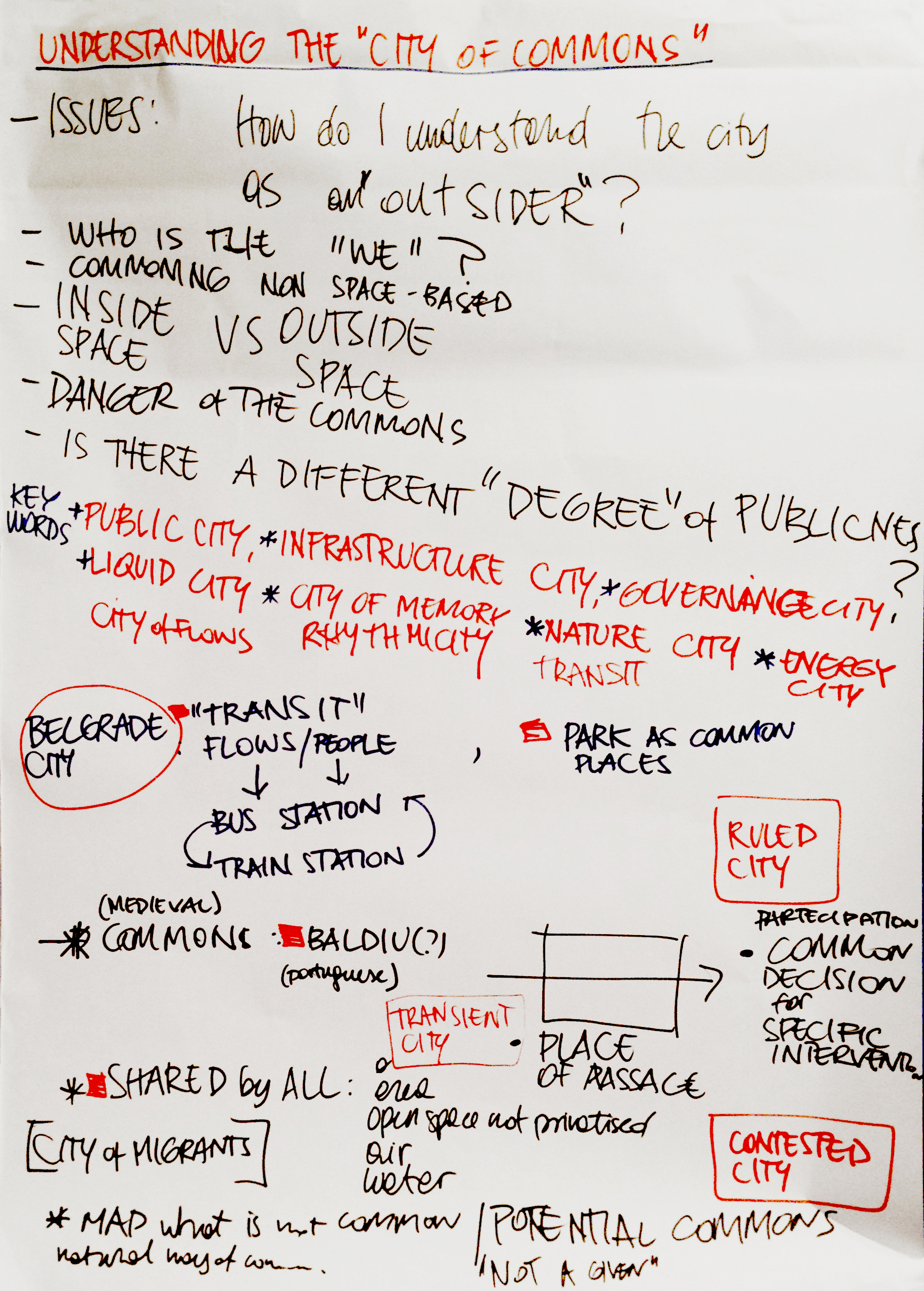
The discussion brought to some essential acknowledgements, among which:
Commoning vs commons: we can only understand the commons as a process, as a discursive practice through which a community redefines itself, its relation with the environment and the rules to exploit, distribute and reproduce its material and immaterial resources.
Community building: creating commons is always the matter of creating a community that access and maintain a specific material or material resource.
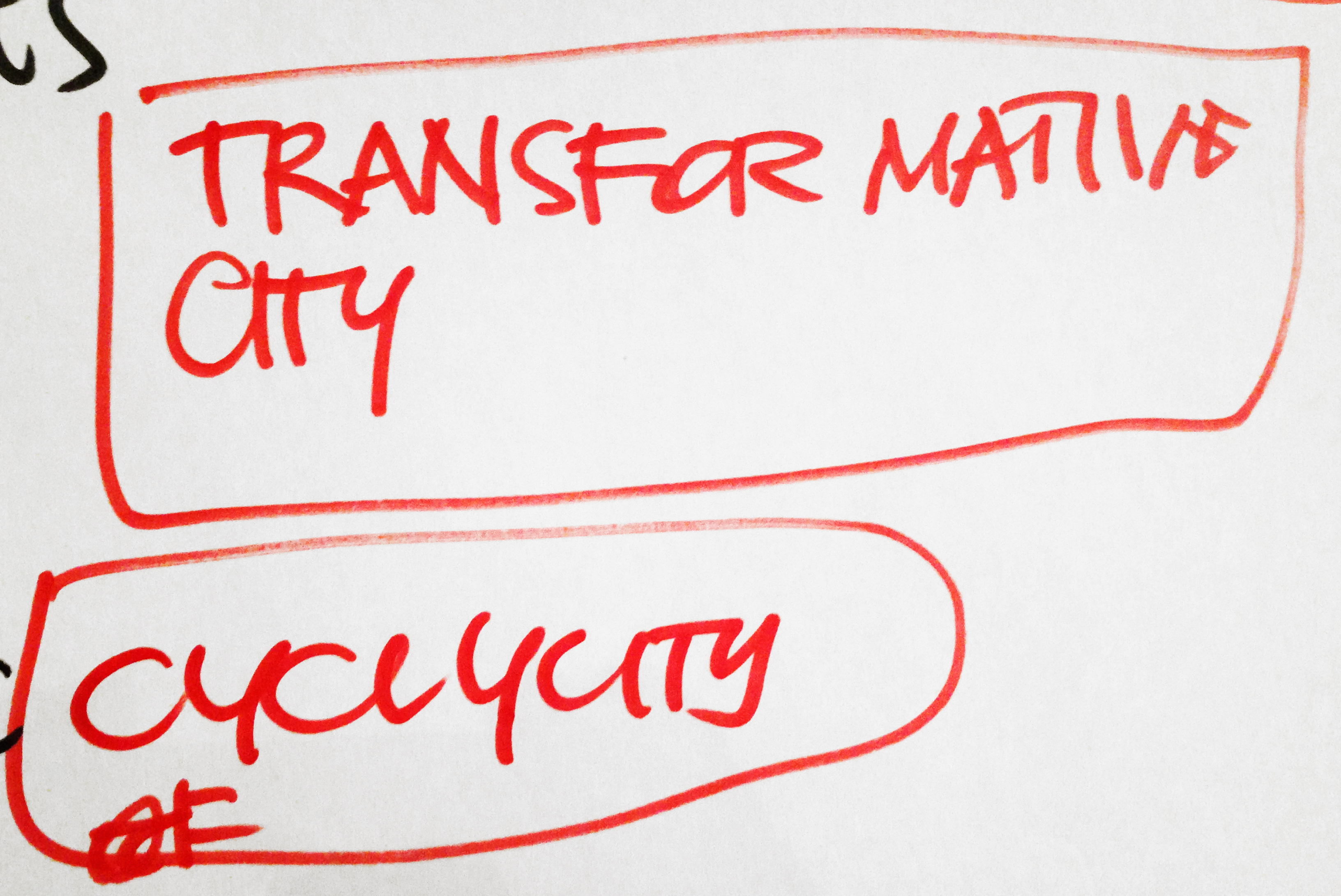
Bounding: commoning is also a matter of excluding from or bounding a specific resource, determining who has access and right to it.
Transient Spaces: caravanserais and similar spaces destined to transient people, nomads, shepherds or merchants have historically been constitutive elements of cities rather than accidental, and their necessity as essential civic spaces need to be reclaimed.
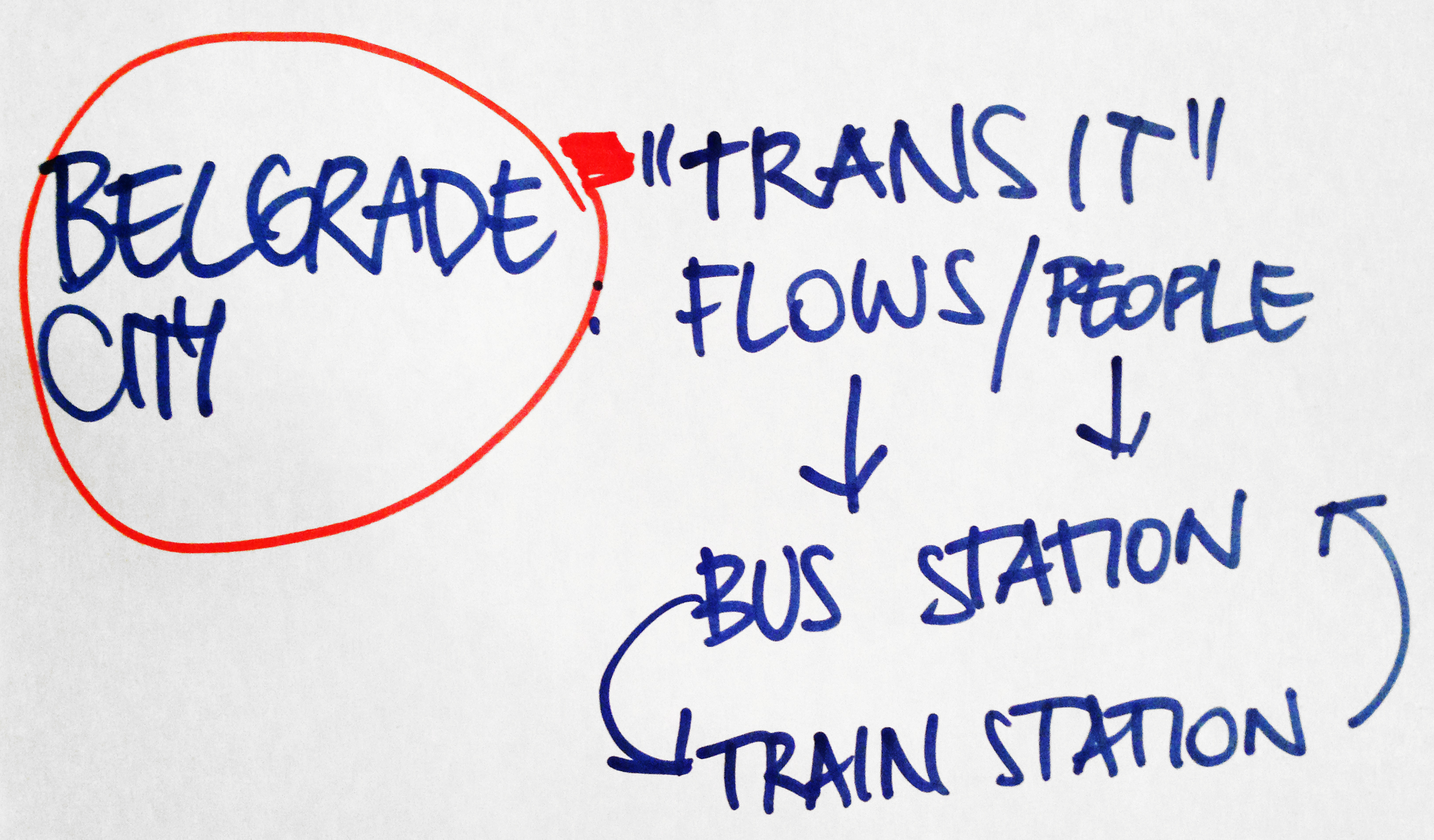
Immateriality: the contemporary concept of commons has mostly to with immaterial resources – knowledge, memory, data, the internet, which have specific reflexes in the urban life, and strongly participate to the overcoming of the geographical boundaries of urban space into the general process of urbanization.
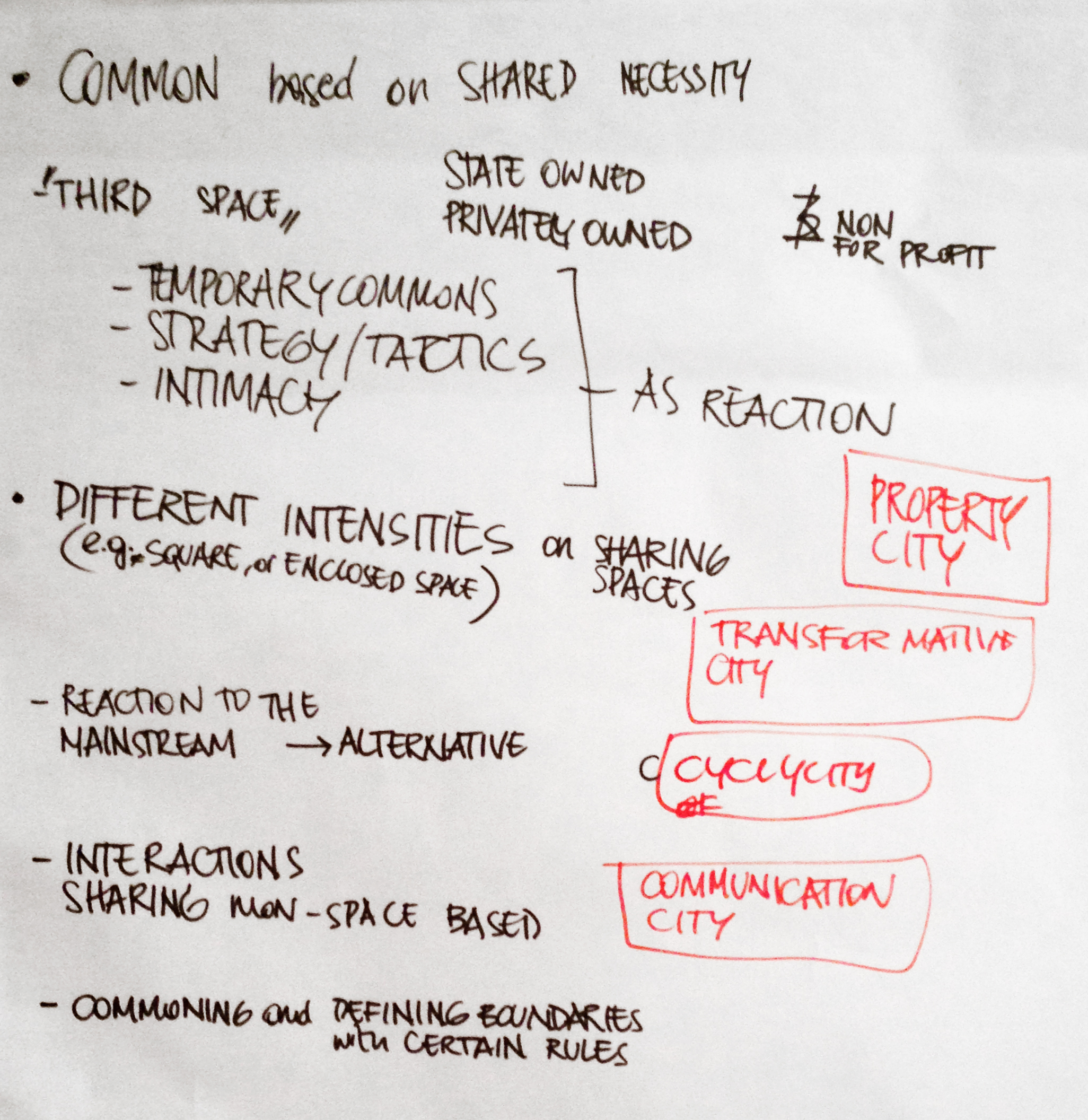
The main reflection that we retained from the discussion was that we only can understand the “city of commons” if we think the whole city as a commons itself. No point to focus on specific discrete locations to which we attribute a particular status of a commons, because these are the product of temporary conditions destined to be transformed, exhausted, renegotiated and regenerated in different forms, places and times. They only make sense as specific elements of a whole complex system of interdependencies, either in form of social, structural or power relations. The city is a relational structure, a meta-tissue allowing commoning, sharing of resources and knowledge. It needs to be understood as a collaborative process constantly defining and redefining communities and rules for the common use of its resources.
Friday October 2nd
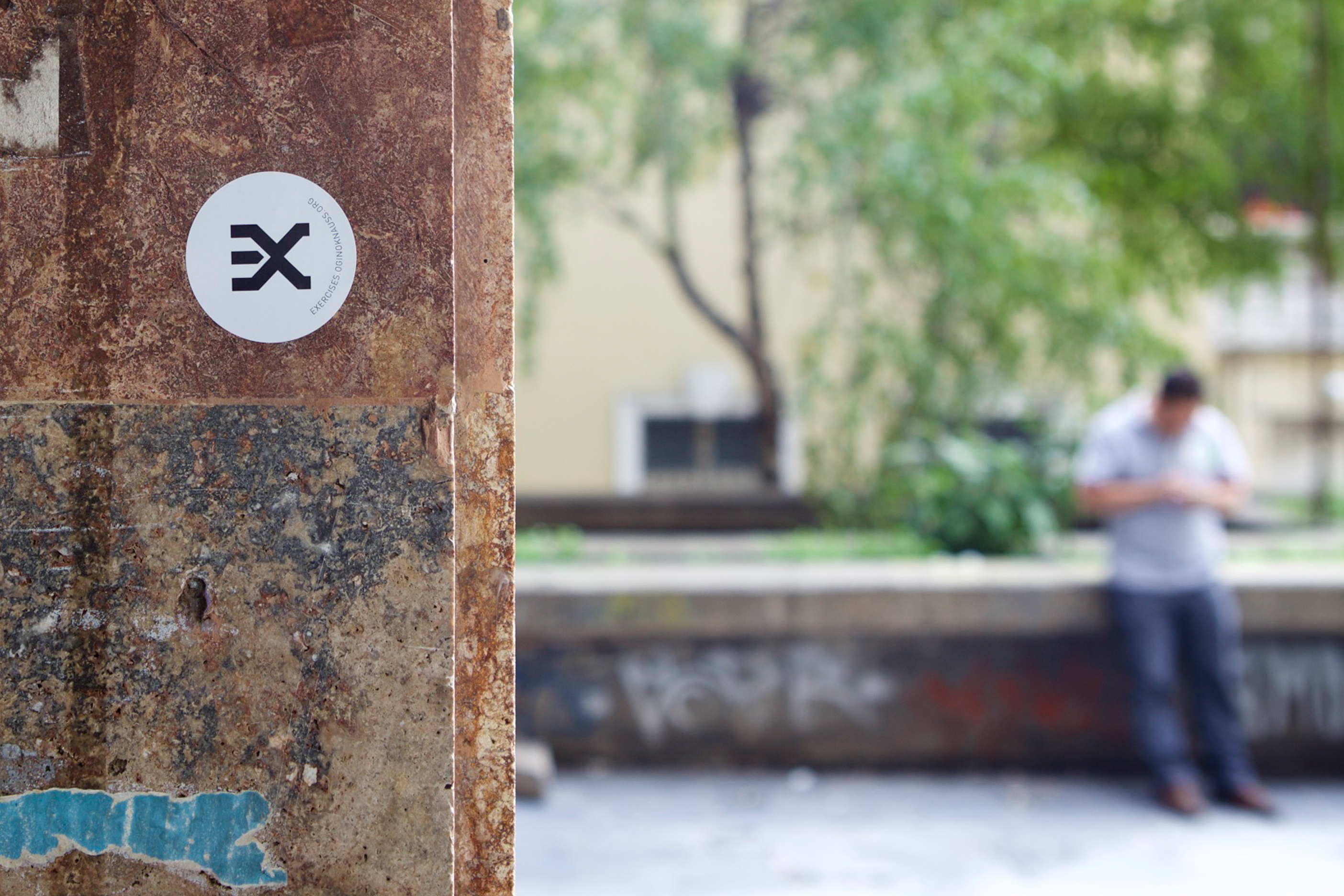
The second session of the workshop was dedicated to a field survey checking locations that could illustrate concretely some of the points expressed during the discussion. Some locations have been proposed and discussed by the participants during the brief at the gallery, but we soon moved out for a survey on the field. Along the way, ideas for new locations came out, completing the proposed itinerary. We had the opportunity to involve Ksenja, an activist of "Ne Davimo Beograd", the campaign against the project 'Belgrade on water' to complete our tour. Finally, Friday night and Saturday informal consultations and meetings refined the program for the public walk.
Ready for the final excursion of Belgrade City of Commons!